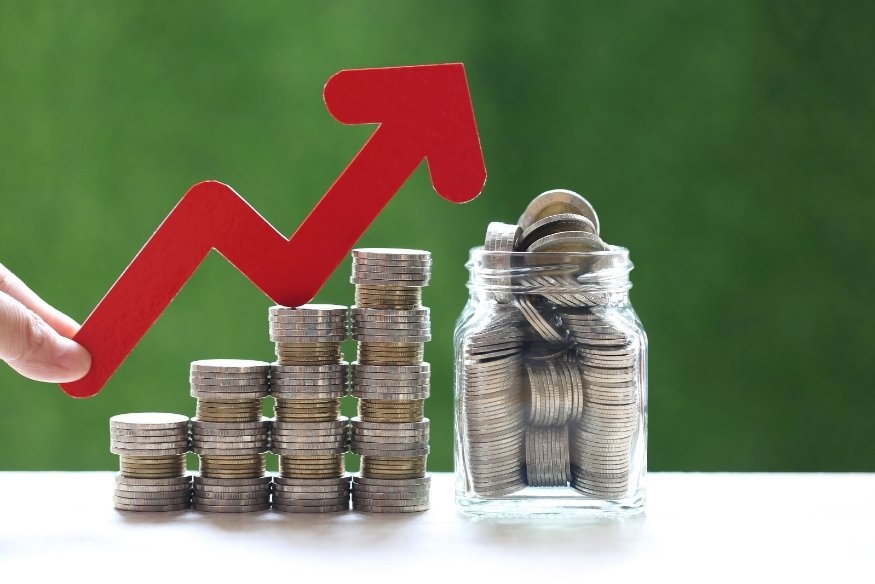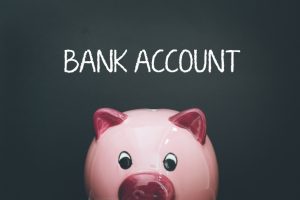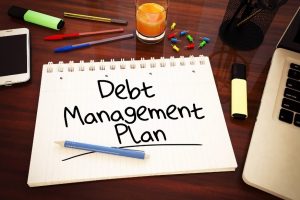Managing your money well is key to financial stability and security. The right tools help you track spending, save, and make better financial choices.
Efficient personal finance management lets you see where your money goes. It helps you make smart spending choices. With financial management techniques, you can focus on what’s important, cut down on waste, and use your money wisely.
By managing your finances well, you can reach your goals. This could be saving for something big, paying off debt, or building a safety fund for the future.
Key Takeaways
- Understand the importance of managing your personal finances effectively.
- Learn how to track your expenses and save money.
- Discover techniques for making smarter financial decisions.
- Prioritize your expenses and reduce unnecessary costs.
- Achieve your financial goals with effective money management.
The Financial Impact of Effective Budgeting

With the cost of living going up, it’s more crucial than ever to plan your finances well. Good budgeting lets you check your money, spot where you spend too much, and fix it. This way, you can reach financial stability.
Why Budgeting Matters in Today’s Economy
In today’s world, with its financial ups and downs and higher costs, budgeting is key. It helps you focus on what’s important, handle debt, and save money. This way, you can better handle money problems and reach your financial dreams.
Budgeting also helps you deal with sudden money issues, like unexpected bills or losing a job. Having some money set aside can greatly lessen your financial worries.
Key Benefits of Systematic Financial Planning
Planning your finances in a methodical way brings many benefits. You can pay off debt, save more, and be more financially stable. By organizing your spending and setting limits, you make choices that help you reach your goals.
| Financial Outcome | Without Budgeting | With Budgeting |
|---|---|---|
| Debt Levels | High | Low |
| Savings Rate | Low | High |
| Financial Stress | High | Low |
By planning your finances in a systematic way, you can secure a stable financial future. Budgeting well is a strong tool. It helps you manage your money wisely, use it to its fullest, and meet your financial goals.
Popular Budgeting Tools for Personal Finance Management
In the digital age, a wide array of budgeting tools has made financial management more accessible and personalized. Choosing the right tool depends on your daily habits, financial goals, and preferred level of control.
Mobile Budgeting Apps
Mobile budgeting apps are particularly popular among users who value convenience and real-time updates. Options like Mint and Personal Capital allow you to track your spending, analyze financial trends, and even monitor your credit score—all from your smartphone. For those willing to invest in premium features, YNAB (You Need a Budget) stands out by offering detailed goal setting and behavioral insights to promote better money habits.
Desktop Budgeting Software
For users who prefer working on a larger screen, desktop-based tools provide a more detailed and controlled budgeting environment. Quicken, a long-established platform, delivers comprehensive tracking of expenses, bills, and investments. Meanwhile, GnuCash offers an open-source solution for those who want advanced customization without subscription fees.
Web-Based Budgeting Platforms
If cross-device accessibility is a priority, web-based platforms like EveryDollar and YNAB’s browser version deliver flexibility without compromising on features. These tools allow you to maintain your budget from any device with internet access—ideal for users with varied routines.
Spreadsheet-Based Budgeting
Finally, traditional spreadsheet budgeting remains a favorite for people who want full control and customization. With Microsoft Excel or Google Sheets, you can create your own templates, incorporate formulas, and share your budgets with others—offering a tactile approach to personal finance.
By reflecting on your personal preferences and financial needs, you can choose the budgeting tool that fits seamlessly into your lifestyle, helping you build better habits and achieve your long-term financial goals.
How to Select the Right Budgeting Tool for Your Needs

Choosing the best budgeting tool begins with an honest look at your financial situation. Not every tool suits everyone—your income structure, financial responsibilities, and money goals all play a role in determining the right fit.
Assessing Your Financial Complexity
Start by reviewing the complexity of your financial life. If you manage just one or two income sources with basic expenses, a simple budgeting app or spreadsheet might suffice. However, if you juggle multiple accounts, investments, or side incomes, you may need a more robust solution with features like account aggregation and custom reporting. Understanding your financial intricacies helps you avoid tools that are either too basic or unnecessarily complex.
Feature Considerations for Different Financial Goals
Your goals also influence the features you’ll need. If your aim is to save for a large purchase, a tool with goal-setting and visual progress tracking is ideal. For those focused on debt repayment, options that offer payment plans, calculators, and alerts can be crucial. The more clearly you define your goals, the easier it becomes to match them with the right budgeting features.
Free vs. Paid Options: What’s Worth Paying For
There are excellent free tools available that cover the basics—tracking expenses, categorizing transactions, and generating simple reports. But if you’re seeking advanced functionality like investment integration, real-time syncing, or personalized advice, it might be worth investing in a paid option. Evaluate what features are truly valuable to your financial progress and whether a paid plan offers a return on that cost through improved control and clarity.
By aligning your tool choice with your financial reality and aspirations, you’ll set the stage for a more sustainable and effective budgeting routine.
Setting Up Your Budgeting System for Success: Essential First Steps for Lasting Financial Organization
A successful budgeting system begins with a thoughtful setup. Attention to detail ensures your chosen tool supports your financial strategies effectively.
Initial Configuration Best Practices to Launch Your Budgeting System the Right Way
The initial setup includes configuring accounts, implementing security measures, and importing past financial data.
Account Setup and Security Measures for Safe Financial Management
Security is crucial. Use strong passwords and enable two-factor authentication to protect your financial information. Take time to explore your tool’s security features to safeguard your data.
Importing Historical Data to Inform Your Budgeting Goals
Integrating historical financial data provides a foundation for setting realistic budgets. Reviewing past spending habits helps in identifying trends and planning future budgets.
Connecting Financial Accounts Securely to Enable Real-Time Tracking
Linking your accounts allows real-time tracking of income and expenses. To do this safely:
- Use a secure internet connection.
- Activate two-factor authentication.
- Regularly review account activity for any discrepancies.
Establishing Categories and Budget Limits That Reflect Your Financial Priorities
Define clear spending categories—such as housing, food, and transportation—and assign limits based on past data and future goals.
Tips for setting up effective categories:
- Analyze your spending history for patterns.
- Set achievable limits aligned with your objectives.
- Reassess and adjust categories periodically.
These steps create a budgeting framework that aligns with your financial goals and habits.
Mastering Essential Features of Budgeting Tools: Unlocking the Full Potential of Your Financial Software

Understanding the core features of budgeting tools is essential to maximize their benefits. From tracking expenses to generating reports, each feature plays a critical role.
Expense Tracking and Categorization to Gain Full Insight into Your Spending Habits
Tracking expenses is foundational. Categorizing these expenses reveals spending habits and highlights areas for improvement.
Automated vs. Manual Entry: Choosing the Best Fit for Your Routine
Automated entries save time and minimize errors, while manual entries offer more control over categorization. Choose based on your preference for convenience versus customization.
Custom Category Creation for Tailored Financial Control
Custom categories provide flexibility to tailor the tool to your unique needs. This is especially useful for tracking non-standard or irregular expenses.
Income Management to Track and Plan All Revenue Streams
Monitoring your income streams helps ensure you’re living within your means. Recording income accurately supports better budgeting decisions.
Reporting and Analysis Features That Translate Data Into Actionable Insights
These features give insights into your financial status, allowing for more informed decisions and timely budget adjustments.
| Feature | Description | Benefit |
| Expense Tracking | Monitors where your money is going | Understand spending patterns |
| Income Management | Tracks your income sources | Maintain spending within means |
| Reporting & Analysis | Offers financial insights and summaries | Enables smarter financial decisions |
Advanced Budgeting Strategies Using Digital Tools: Going Beyond the Basics for Better Financial Outcomes
Digital budgeting tools offer innovative strategies that enhance your financial planning.
Zero-Based Budgeting in the Digital Age for Purpose-Driven Spending
Zero-based budgeting assigns every dollar a purpose. Digital tools simplify tracking and adjusting allocations in real-time, helping ensure each dollar is effectively used.
Envelope Method with Modern Applications for Category-Specific Control
This classic method gets a digital upgrade with virtual envelopes. Tools now allow you to allocate funds by category, reducing overspending and increasing accountability.
Goal-Based Savings Automation to Build Wealth Effortlessly Over Time
Automation helps you consistently save toward specific goals. Set up recurring transfers and monitor progress easily.
Emergency Fund Building with Predictable Monthly Contributions
Aim to save three to six months of expenses. Use digital tools to automate transfers and track your progress.
Major Purchase Planning with Dedicated Digital Accounts
Saving for big purchases like a vehicle or home becomes manageable with scheduled transfers and visual progress indicators.
Digital strategies help build strong money habits and achieve goals more efficiently.
Troubleshooting Common Issues with Budgeting Tools: Solutions to Keep Your Financial Plan on Track
While budgeting tools are helpful, occasional issues may arise. Knowing how to troubleshoot these ensures continued financial progress.
Synchronization Problems and Solutions to Restore Real-Time Accuracy
Syncing errors can result in outdated data. Ensure proper account connections and strong internet access. If issues persist, reconnect accounts or contact support.
Dealing with Categorization Errors That Distort Budget Accuracy
Incorrect transaction categorization skews your data. Review and correct these regularly, and set up rules for consistent future categorization.
Recovering from Budgeting Mistakes with Confidence and Clarity
Budgeting errors, like missed entries or misallocations, are common. Most tools let you edit or add transactions after the fact. Learn from these mistakes to improve future budgeting.
Conclusion: Taking Control of Your Finances with Budgeting Tools

In today’s financial landscape, using the right budgeting tools empowers you to take control of your money. From mobile apps to customized spreadsheets, these tools simplify tracking, encourage smarter choices, and support long-term planning.
By selecting a tool that fits your lifestyle and using its features effectively, you can reduce financial stress, build savings, and work steadily toward your goals. Start now, and invest in a stable, confident financial future.









